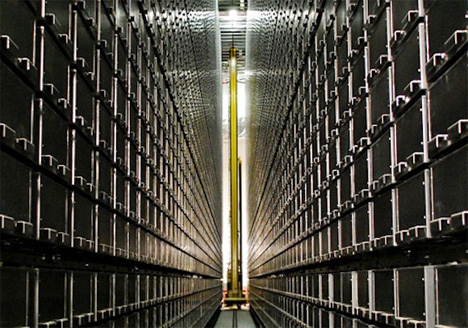Information and knowledge dissemination within Parliament House plays an integral role in its function. Without it it would cease to function at all. Senators' and members' offices, including Minsters' offices all use the information services provided within Parliament House, so therefore it is easy to understand that a successful information, knowledge and research services is integral to Parliament House.
The DPS Annual Report from 2009-2010 found that clients were happy with Parliament House's current info services but nominated a few areas of change:
a) achieving greater consistency and quality of service in responses to individual client requests
b) improving, if possible, the timeliness of Library publications
c) responding more effectively to all three stages of the life cycle of members of parliament - new, medium and long term
d) continuing to improve the resources available to clients at their desktop (or mobile devices)
e) improving the availability of transcripts and broadcast materal; and
f) improving communication mechanisms bearing in mind the pressures on the time of clients.
This shows that Parliament House are feeling the pressures of technological advancements and being able to implement them to help improve their current systems. But how will this effect the architecture of the building.. Will new rooms need to be added or existing ones changing to a new function? How can flexible architecture help to aid these technological advancements?
Obviously due the the changing nature of technological advancements.. one thing is clear... the need for architecture that is flexible enough to be able to cope with changes that will occur throughout the next 100 or so years.
Some exemplars surrounding libraries have been researched as they appear to be at a time of change in the today's world:

Take a look at this website below at: http://kanikasweet-techz.blogspot.com/2011/06/underground-literature-chicagos.html
Underground Literature: Chicago’s Futuristic Robotic Library

'The death of books – and, presumably, libraries – has been predicted by futurists for decades. We certainly seem to be headed that way with e-book readers and digital books taking the place of paper books. A new library facility at the University of Chicago blends the old with the new by replacing librarians and their rickety wooden ladders with a fascinating system of robots and a five-story underground storage facility

In the $81 million Joe and Rika Monsueto Library, patrons walk into a beautiful light-filled room with a domed roof – and a noticeable lack of books. What patrons can’t see is the enormous depository of books just below their feet in the subterranean storage room. The storage area contains around 35,000 metal bins, all filled to capacity with books. The books are put into the bins by size, not by subject, allowing for the maximum amount of useable space in each. When a patron needs a book, they simply request it via computer database. That’s where the robots come in.
Huge robotic retrieval cranes move around among the stacks of bins to select the appropriate book. Because each book and each bin bears a unique bar code, the cranes can go right to the requested bin and deliver it to the circulation desk upstairs. The clerk finds the desired book and delivers it to the requester within about five minutes of the initial request. The underground book room is kept at optimal preservation conditions, meaning that the library will incur lower maintenance costs over the life of the system.'
How can architecture accommodate information dissemination as a network within Parliament House? What elements will be flexible? Will all elements have a flexible nature or will some be static??
Parliament House as a network....

How can architecture accommodate information dissemination as a network within Parliament House? What elements will be flexible? Will all elements have a flexible nature or will some be static??
Parliament House as a network....


No comments:
Post a Comment